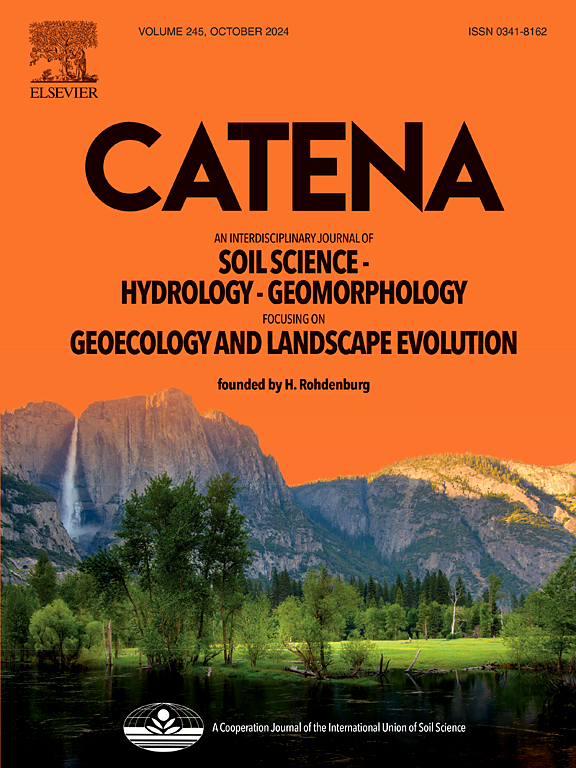Evaluation of surface coal mines reclaimed to different vegetation types and their stability in semi-arid areas
Guo, Jiwang , He, Tingting , Zhang, Wenkai , Xiao, Wu , Lei, Kaige
2025-03-01 null null 250(卷), null(期), (null页)
In mining areas, vegetation reclamation has been the focus of land reclamation research, and it is crucial to restoring the natural environment destroyed by humans. Unfortunately, land reclamation research is often limited by insufficient temporal and spatial data. Using satellite observation data and cloud computing, this research identifies the spatial and temporal dynamics of reclamation of various vegetation within the largest open-pit coal mine, the Pingshuo open-pit mine, in China. On the basis of vegetation growth curves, the study assesses the current impact of reclamation. There were two large and small reclamation areas formed by the mine in the southwest and northeast, with forest land, grassland, and cropland accounting for 15.79 %, 42.61 %, and 41.59 % of the total reclamation area, respectively. A significant portion of the reclamation activities took place between 2010 and 2015, peaking in the southwest part of the mine area before shifting to the northeastern part of the mine area. Historically, forest land reclamation shifted to grassland reclamation, but since 2010 it has shown an increase in arable land reclamation. As a result of our studies, we were able to determine that the average stabilization time of forest land, grassland, and cropland in the mine area had been 6.50 years, 5.42 years, and 4.64 years, respectively. In total, 50.54 % of the area had reached the stabilization stage of reclamation, with grassland accounting for 41.37 % of the stable vegetation and cropland representing 41.93 %, while forest land only accounted for 16.70 % of the stable vegetation. Using a simple and easy-to-use methodology, this study provides information suitable for a wide range of scenarios, thereby serving regional development and policy.
相关推荐
- Vegetation Resilience Evaluation of Coal Waste Dumps After Reclamation in Arid and Semi-Arid Mining Areas Based on Temporal Satellite Imagery [2025-03-01]
- Analysis of Spatial-Temporal Changes and Driving Forces of Desertification in the Mu Us Sandy Land from 1991 to 2021 [2025-03-01]
- Surface coal mining impacts on land use change and ecological service value: a case study in Shengli coalfield, Inner Mongolia [2025-03-01]
- Influence of management on vegetation restoration in coal waste dump after reclamation in semi-arid mining areas: examining ShengLi coalfield in Inner Mongolia, China [2025-03-01]
- Influence of farmland marginalization in mountainous and hilly areas on land use changes at the county level [2025-03-01]



